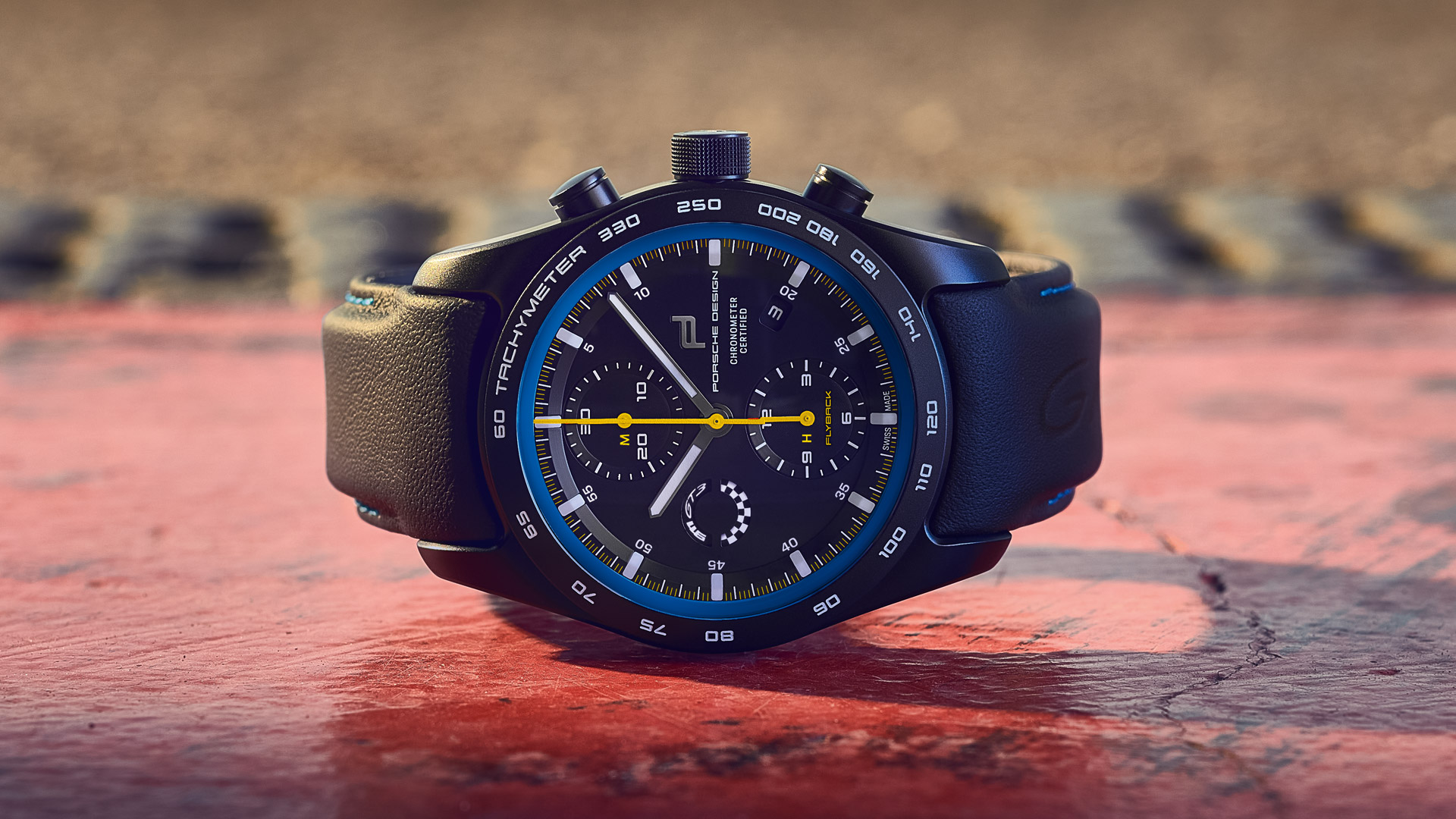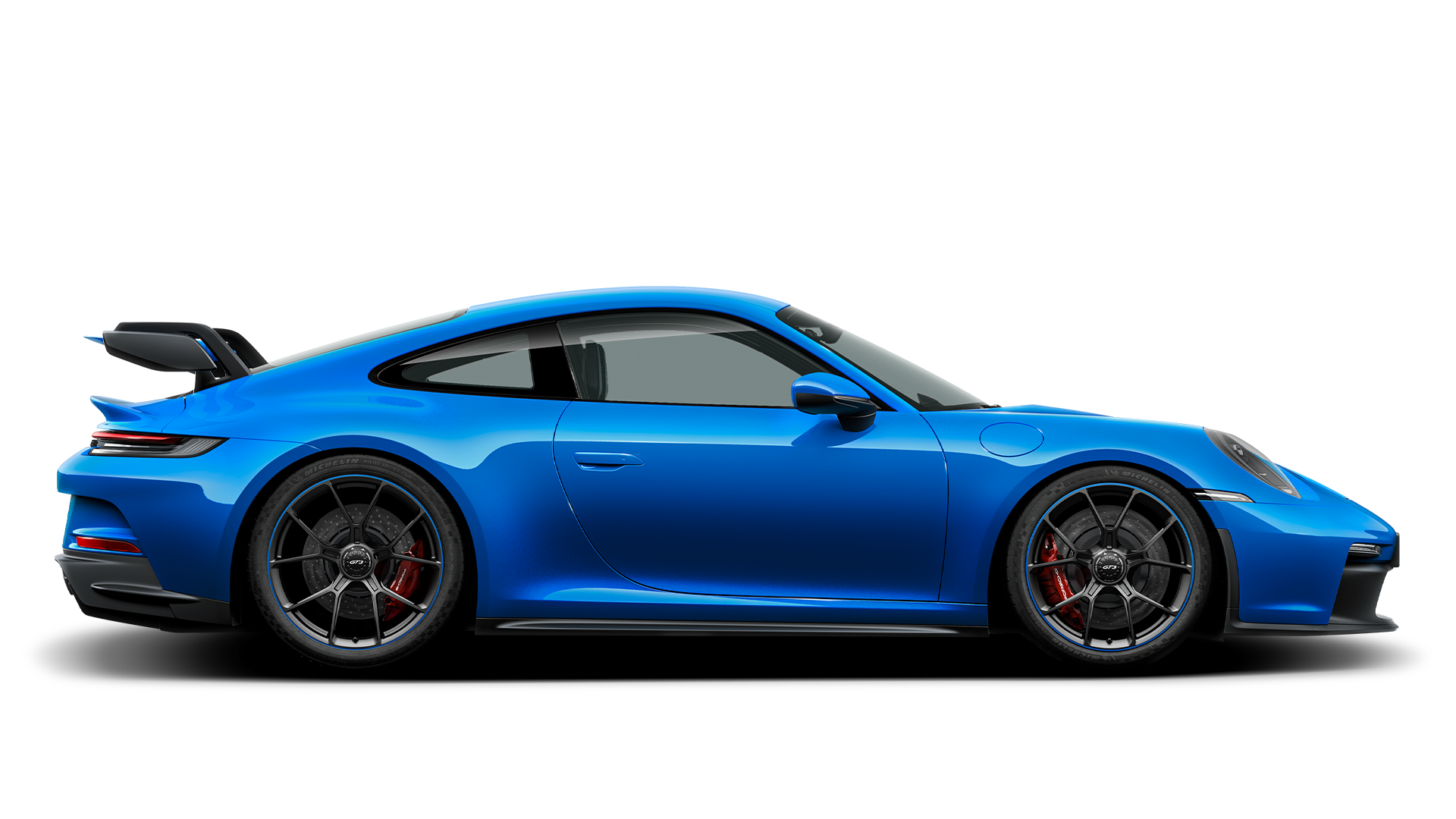

The new 911 GT3 with Touring Package.
The 911 GT3 with Touring Package also sets the performance tone – but with focus primarily on the road. Thanks to ingenious aerodynamics, cornering remains impressive, even without a large rear wing.
Carpe secundum.
Carpe diem, they say – seize the day. But we are Porsche . And so our motto for the new 911 GT3 models is: carpe secundum – get the most out of every second.
We know that your time is precious. And every minute in the cockpit is valuable. So, we have once again intensified everything that makes a sports car: performance, tuning, aerodynamics.
Time flies. This is your time. Hop in.
We know that your time is precious. And every minute in the cockpit is valuable. So, we have once again intensified everything that makes a sports car: performance, tuning, aerodynamics.
Time flies. This is your time. Hop in.
The new rear wing with swan-neck connection for additional downforce.
Large slats for increased downforce: the rear diffuser.
Front apron with extended openings for optimised brake cooling.
Inspired by motorsport: carbon bonnet with integrated air outlets.
360° Exterior.

Developed in Flacht, at home on the racetrack: the 4.0-litre six-cylinder high-speed naturally aspirated engine.
With a sound that makes your heart beat faster. Feels and sounds close to the racetrack. With the 911 GT3, it’s not only the driving experience that gives you that authentic motorsport feeling – it’s the roar of its thoroughbred performance engine.

Everything at a glance: the new Track Display showing all your relevant driving stats for the racetrack.

Seven performance-oriented gears for a true motorsport feeling: the PDK gear selector, inspired by the manual lever.
Available as an option for the 911 GT3, the 6-speed GT sports manual transmission gives you pure, more direct driving experience.
360° Interior.
Discover the 911 GT3 models in detail.
You already know the highlights. Here are more details about the individual chapters.

Aerodynamics and design
Discover more about the extremely aerodynamic exterior.
open chapterPerformance
Be inspired by the unbeatable performance.
open chapterInterior and infotainment
Discover more about assistance systems and infotainment.
open chapterMotorsport
Discover the roots of the 911 GT3 – motorsport.
open chapterTouring Package
Motorsport look meets understatement: the 911 GT3 with Touring Package.
open chapterAerodynamics and design
Performance
Interior and infotainment
Motorsport
Touring Package
Select and configure 911 GT3 models.
911 GT3
from US $ 314,900
Price
375 kW/510 PS
Power (kW)/Power (PS)
3.4 s
Acceleration 0 - 100 km/h
318 km/h
Top speed
Height
1,279 mm
Width
1,852 mm
Length
4,573 mm
Wheelbase
2,457 mm
Technical Specs
| Number of cylinders | 6 |
| Bore | 102.0 mm |
| Stroke | 81.5 mm |
| Displacement | 3,996 cm³ |
| Power (kW) | 375 kW |
| Power (PS) | 510 PS |
| RPM point maximum power | 8,400 1/min |
| Maximum engine speed | 9,000 1/min |
| Max. torque | 470 Nm |
| RPM point maximum torque | 6,100 1/min |
| Max. output per liter (kW/l) | 93.80 kW/l |
| Max. output per liter (PS/l) | 127.60 PS/l |
| Top speed (Manual) | 320 km/h |
| Top speed (PDK) | 318 km/h |
| Acceleration 0 - 100 km/h (Manual) | 3.9 s |
| Acceleration 0 - 100 km/h (PDK) | 3.4 s |
| Acceleration 0 - 160 km/h (Manual) | 7.9 s |
| Acceleration 0 - 160 km/h (PDK) | 7.0 s |
| Acceleration 0 - 200 km/h (Manual) | 11.9 s |
| Acceleration 0 - 200 km/h (PDK) | 10.8 s |
| Flexibility (80-120 km/h) (50-75 mph) in 5th gear (Manual) | 5.9 s |
| In-gear acceleration (80-120km/h) (50-75 mph) (PDK) | 1.9 s |
| Length | 4,573 mm |
| Width | 1,852 mm |
| Width (with mirrors) | 2,027 mm |
| Height | 1,279 mm |
| Wheelbase | 2,457 mm |
| Turning circle | 10.4 m |
| Unladen weight (DIN) (Manual) | 1,418 kg |
| Unladen weight (DIN) (PDK) | 1,435 kg |
| Unladen weight (EU) (Manual) | 1,493 kg |
| Unladen weight (EU) (PDK) | 1,510 kg |
| Permissible gross weight (Manual) | 1,765 kg |
| Permissible gross weight (PDK) | 1,782 kg |
| Maximum load | 347 kg |
| Luggage compartment volume, front | 132 l |
| CO2 emissions combined (Manual) | 304 g/km |
| CO2 emissions combined (PDK) | 283 g/km |
| Sound level of stationary vehicle (Manual) | 97 dB(A) |
| Sound level of stationary vehicle (PDK) | 98 dB(A) |
| Sound level of stationary vehicle (rpm) | 3,658 1/min |
| Sound level of passing vehicle | 72 dB(A) |
| Manual | from US $ 314,900 |
| PDK | from US $ 314,900 |
Gallery.
911 GT3 Models
911 GT3 Models
911 GT3 Models
911 GT3 Models
911 GT3 Models
911 GT3 Models
911 GT3 Models
911 GT3 Models
911 GT3 Models
911 GT3 Models
911 GT3 Models
911 GT3 Models
911 GT3 Models
911 GT3 Models
911 GT3 Models
911 GT3 Models
911 GT3 Models
911 GT3 Models
911 GT3 Models
911 GT3 Models
911 GT3 Models

Maximum performance never looked so good.
Just like its motorised counterpart, the Porsche Design Chronograph 911 GT3 captivates not just with its sleek sporting design, but also with its high-powered performance and premium craftsmanship. It comes complete with a variety of design features and materials drawn directly from the legendary sports car. It is exclusively reserved for owners of the vehicle.

Personalisation & finishing.
In the
























































































